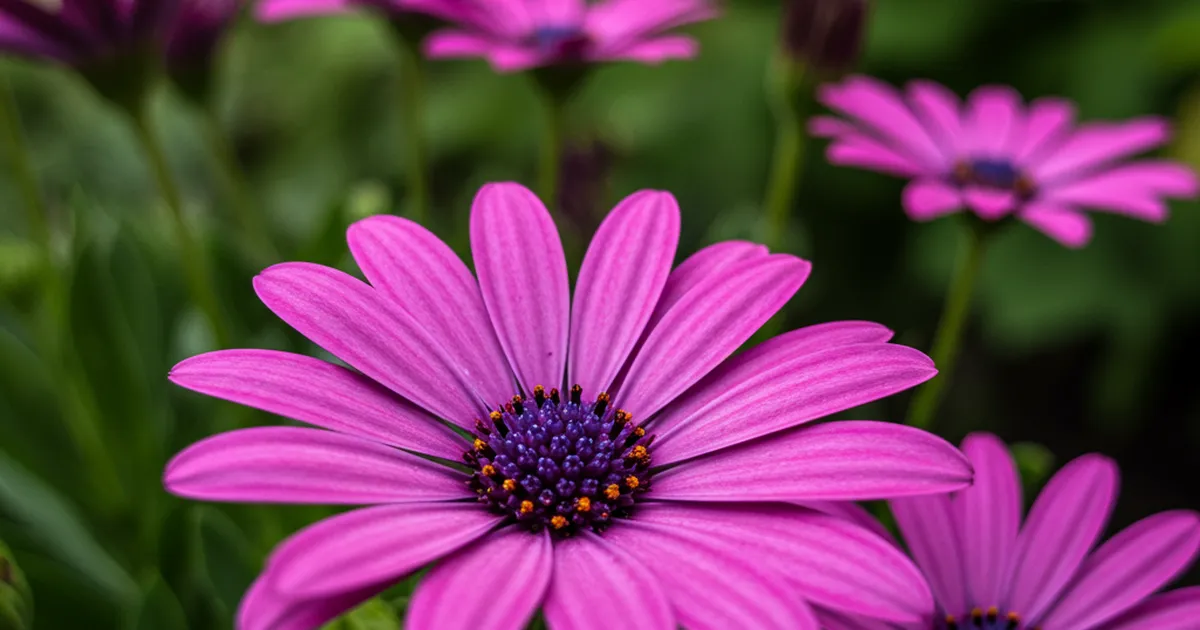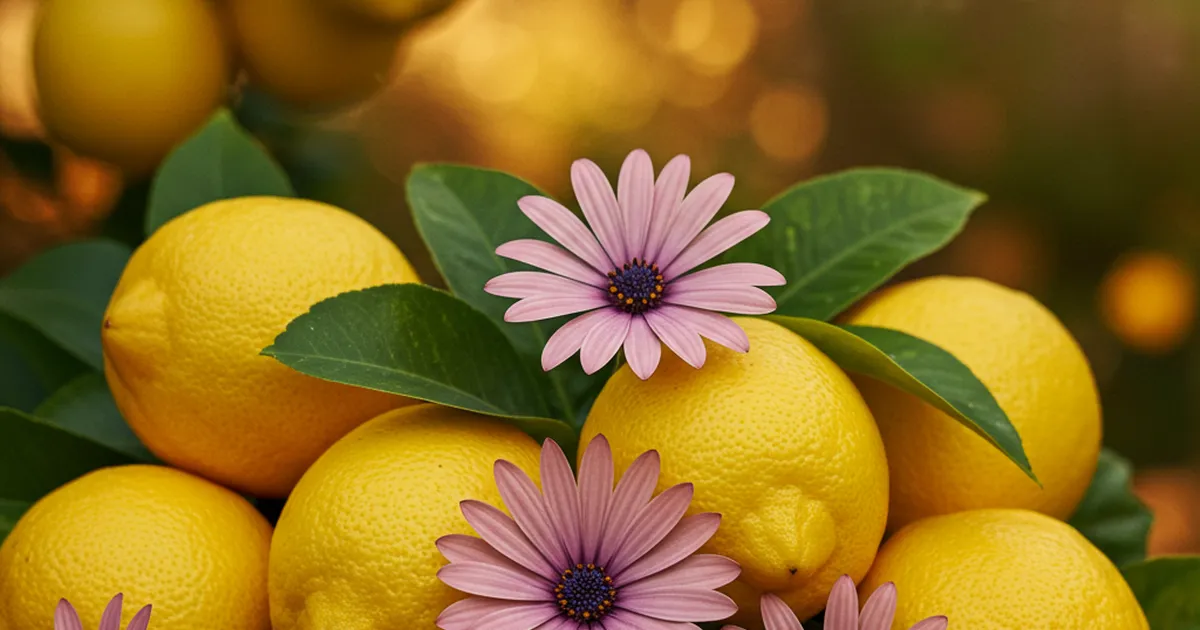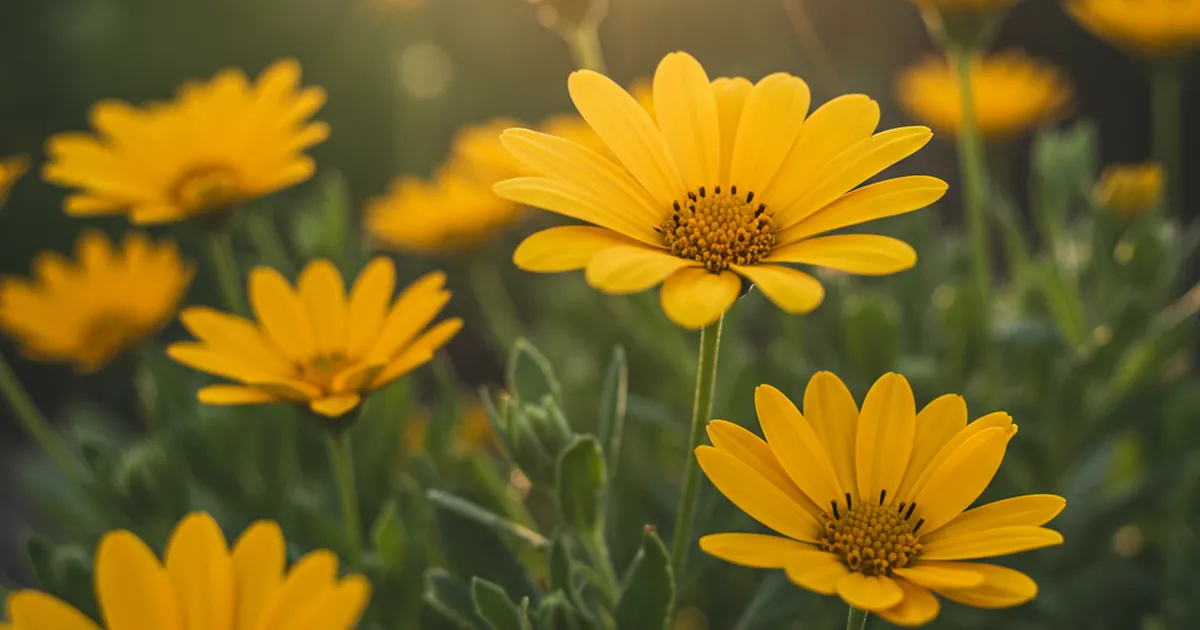Introduction:
African daisies, scientifically known as Osteospermum spp., bear a resemblance to common daisies, featuring petals arranged around a central disk. They belong to the Asteraceae family, which also includes Shasta daisies and zinnias.
However, unlike the traditional daisy, African daisies exhibit vibrant colors, coming in various stunning hues like white, cream, pink, yellow, purple, and blue.
| Common Name | African daisy, cape daisy, osteospermum |
| Botanical Name | Osteospermum spp. |
| Family | Asteraceae |
| Plant Type | Perennial, annual |
| Mature Size | 1–3 ft. tall, 1–2 ft. wide |
| Sun Exposure | Full |
| Soil Type | Moist, well-drained |
| Soil pH | Acidic |
| Bloom Time | Spring, summer, fall |
| Flower Color | Purple, pink, yellow, orange, white |
| Hardiness Zones | 10–11 (USDA) |
| Native Area | Africa, Asia |
Caring for African Daisies

African daisies thrive whether planted in the ground or in containers. They blossom most abundantly from late spring to early summer, with another peak in late summer to early fall. To ensure continuous growth, it is advisable to combine them with other plants that provide visual interest during the hottest periods of summer.
Being perennials, African daisies will return yearly within their designated hardiness zones. In colder regions, it is recommended to take cuttings before the initial frost to propagate new plants indoors during the winter.
These flowers demand minimal upkeep when grown in suitable conditions. Ample sunlight and well-draining soil are essential. Regular watering and fertilizing from spring to fall are necessary. Deadheading, the removal of spent blooms, promotes continuous flowering.
Light Preferences
African daisies flourish best under full sun but can tolerate partial shade, albeit with reduced blooming. Their flowers typically open in response to light and close during the night or overcast weather. Some newer cultivars like ‘4D Pink’, ‘4D Silver’, and ‘4D Berry’ remain open at night.
Planting and Soil Requirements
African daisies favor organically rich, well-draining soil with a slightly acidic pH. Incorporating compost or organic matter during planting enhances drainage and nutrient levels.
Spacing plants at least 12 inches apart allows them room to expand, as certain varieties can grow up to 12 inches wide. Spring is the best time for planting after the last frost.
Watering
While somewhat drought-resistant once established, African daisies need a minimum of 1 inch of water per week for optimal growth. In extreme heat or drought, their growth may slow, and they could become dormant.
Maintaining consistently moist soil is crucial. Avoid overwatering to prevent issues like root rot due to waterlogged soil.
Temperature and Humidity
<
How to Propagate African Daisies

Most African daisy varieties are hybrids and may not grow true from saved seeds. However, you can easily propagate these plants by using cuttings. This method is also ideal for overwintering the plant outside its hardiness zones. Here are the steps to propagate African daisies:
Guide to Cultivating African Daisy From Seeds

The hybrids available in garden centers are typically not sold as seeds, but you might find seeds for certain pure species variations of African daisy, like Osteospermum ecklonis. Below are the steps to initiate plant growth from seeds:
Common Pests & Plant Diseases

African daisies are generally resistant to pests and diseases when they are grown in optimal conditions. However, in moist environments, watch out for fungal issues that may arise.
Symptoms of fungal problems include damaged or discolored leaves. Enhancing the air circulation around your plants can help prevent fungal diseases, and applying fungicide may be necessary.
Some typical plant pests, such as whiteflies and aphids, can pose a threat, particularly to plants under stress. Early detection allows for control using insecticidal soap or chemical sprays.
Tips for Encouraging African Daisies to Flower
African daisies typically bloom effortlessly, but there are various factors that may hinder blooming. Here are some methods to help your African daisies bloom:
- Remove faded flowers to stimulate further blooming.
- Apply fertilizer every two to three weeks, with potted plants needing more.
- Provide shade from excessive heat and increase watering in dry spells.
- If the plants are sparse and not blooming well, consider relocating them to a sunnier spot.
Issues commonly encountered with African daisies
African daisies are generally easy-to-care-for plants. Besides the usual problems caused by insects and diseases, a couple of other common issues may arise:
Damage caused by animals
Groundhogs, in particular, have a liking for annuals, especially flowers. The most effective way to protect your plants from feeding animals is by installing strong fencing.
Reduced blooming in midsummer
In regions with cooler climates, African daisies typically bloom consistently from spring until fall. However, in very hot and humid climates, you might notice your plants becoming partially dormant during the hottest weeks of midsummer. This is normal, and the plants usually bounce back as the weather cools down. In such areas, it’s advisable to plant African daisies in partial shade.
FAQ
Do African daisies return every year?
Whether African daisies return each year depends on their location. If planted in USDA hardiness zones 10-11, they can grow as perennials, coming back annually. In colder zones falling within USDA hardiness zones 9 or lower, African daisies need to be grown as annuals, requiring replanting each year.
What is the symbolic meaning of the African daisy?
The African daisy symbolizes purity, the life force of the sun, new beginnings, love, care, and admiration.
Do African daisies bloom throughout the summer?
If grown in cooler summer climates, African daisies will bloom from spring until the first frost. However

